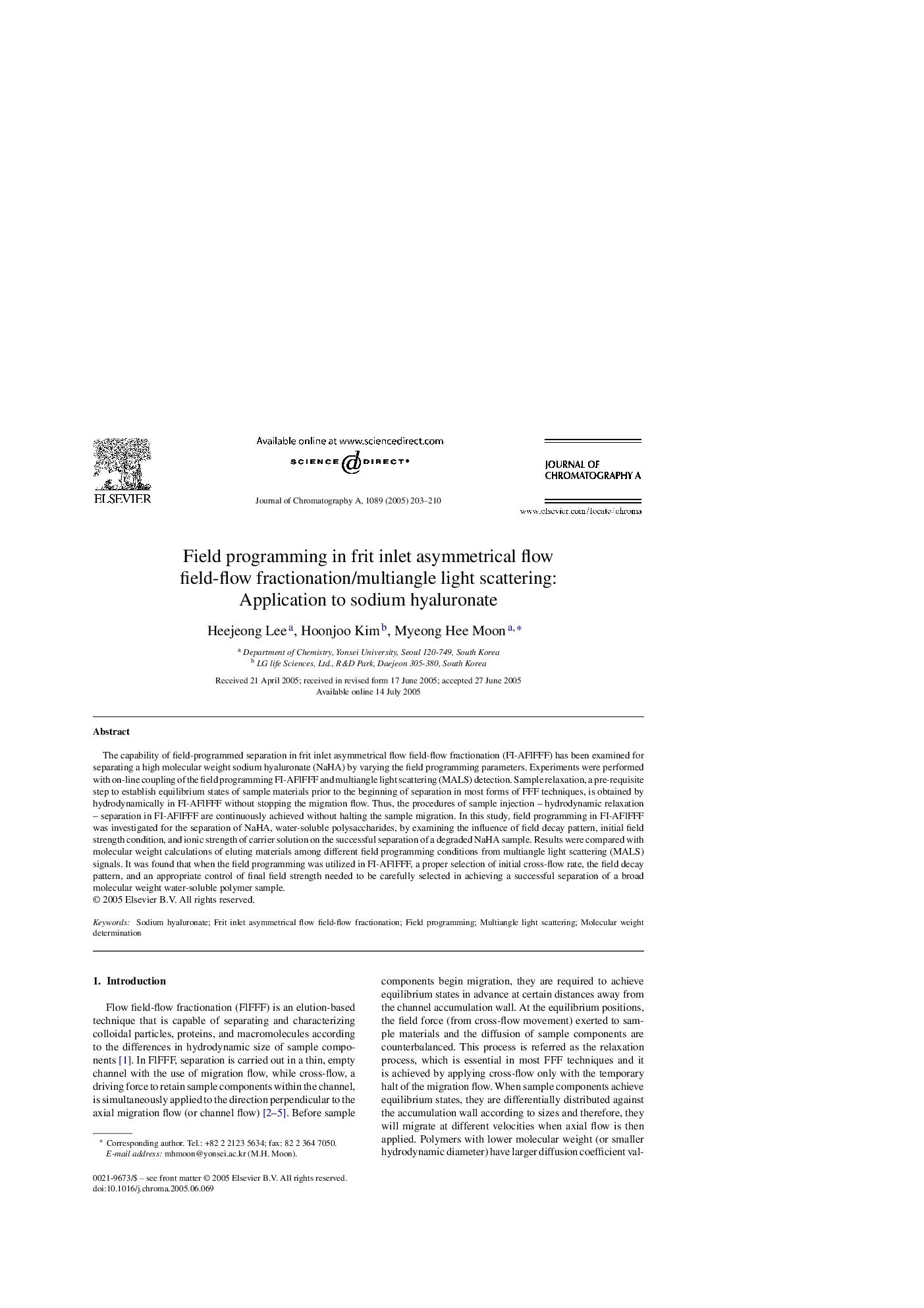| Article ID | Journal | Published Year | Pages | File Type |
|---|---|---|---|---|
| 9748733 | Journal of Chromatography A | 2005 | 8 Pages |
Abstract
The capability of field-programmed separation in frit inlet asymmetrical flow field-flow fractionation (FI-AFlFFF) has been examined for separating a high molecular weight sodium hyaluronate (NaHA) by varying the field programming parameters. Experiments were performed with on-line coupling of the field programming FI-AFlFFF and multiangle light scattering (MALS) detection. Sample relaxation, a pre-requisite step to establish equilibrium states of sample materials prior to the beginning of separation in most forms of FFF techniques, is obtained by hydrodynamically in FI-AFlFFF without stopping the migration flow. Thus, the procedures of sample injection - hydrodynamic relaxation - separation in FI-AFlFFF are continuously achieved without halting the sample migration. In this study, field programming in FI-AFlFFF was investigated for the separation of NaHA, water-soluble polysaccharides, by examining the influence of field decay pattern, initial field strength condition, and ionic strength of carrier solution on the successful separation of a degraded NaHA sample. Results were compared with molecular weight calculations of eluting materials among different field programming conditions from multiangle light scattering (MALS) signals. It was found that when the field programming was utilized in FI-AFlFFF, a proper selection of initial cross-flow rate, the field decay pattern, and an appropriate control of final field strength needed to be carefully selected in achieving a successful separation of a broad molecular weight water-soluble polymer sample.
Keywords
Related Topics
Physical Sciences and Engineering
Chemistry
Analytical Chemistry
Authors
Heejeong Lee, Hoonjoo Kim, Myeong Hee Moon,
